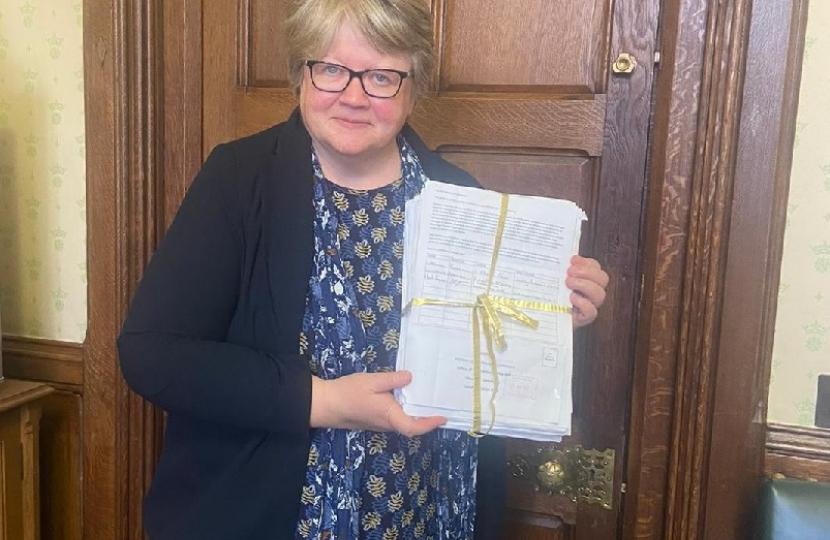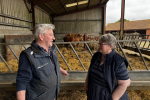
Therese has today formally submitted her parliamentary petition, which calls for a review of all onshore energy connections along the Suffolk coast, to the House of Commons. The petition signed by 3,821 people requests that a comparative study be undertaken, including brownfield sites, properly assessing the environmental impact before any of the current energy proposals are taken further.
Therese said: “Thank you to everyone who signed my petition. This clearly demonstrates the strength of feeling locally. Although there is an entirely correct government commitment to provide 40GW of offshore wind electricity by 2030, I’ve consistently made it clear that it’s essential our precious landscapes and communities are protected by placing the onshore infrastructure in the most appropriate location. That’s why I opposed the Friston sub-station, the Nautilus proposals and why I’ve recently sent off submissions opposing the options set out in the Eurolink and Sealink consultations. I have been clear and continue to press the case that onshore connections should be placed on brownfield land.”
Therese added: “Whilst I welcome the recent commitment by National Grid ESO to consider “offshore routes” for electricity transmission, it’s clear their review needs to go a step further. Undertaking a proper comparative assessment of the environmental, social and economic impact before these connections proceed any further. Although I recognise National Grid are now investigating the Isle of Grain in Kent as a possible connection for the Nautilus project instead of here on the Suffolk coast. It is my view that this should also be done for both the Eurolink and Sealink proposals.”
Dr Coffey has recently written to both the Secretary of State, Grant Shapps and the new Minister for Networks, Andrew Bowie asking them to investigate Bradwell in Essex as a possible landing point. Not least because she is given to understand that site has a currently dormant connection to the grid.
Therese will continue to engage with Ministers both individually and through the Offshore Electricity Grid Task Force that she helped set up with other East Anglian MPs. As well as with National Grid to push for the onshore infrastructure to be sited in much more appropriate locations.
